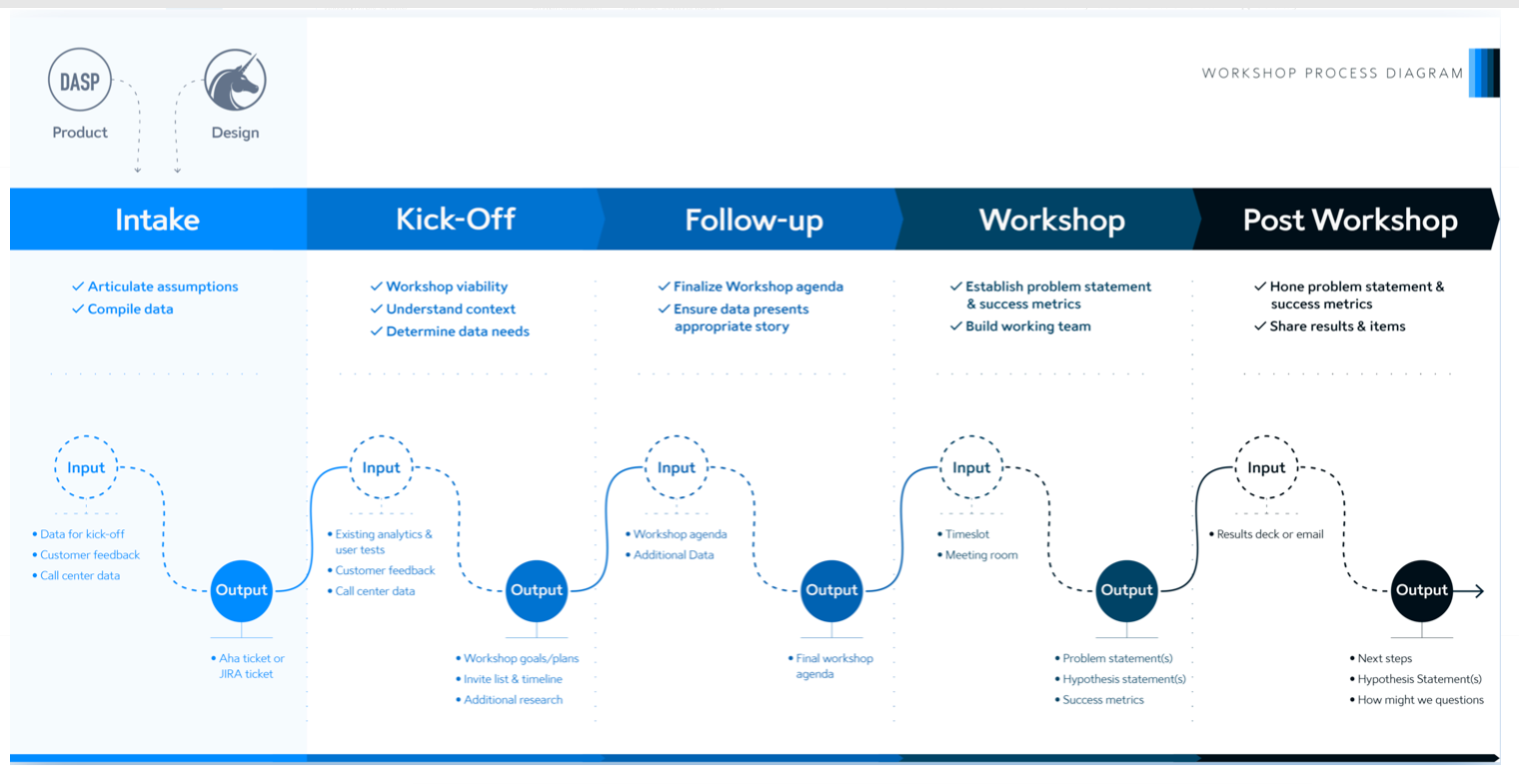Design Thinking Workshops @ Spectrum
Role: Co-founder
Timeline: 2019
-
Problem Statement
Typically product and engineering included design after a project was already in progress. Timelines and expectations were already been established and needed to be vetted out.
Inconsistent Expectations
Across teams, there were different expectations for the workshop's goals and outcomes. Should the wireframes be an output? Should there be more than one problem statement?
Proper Participants
Workshops had variable invite lists. In some instances, too many participants were included, and in others, not enough. What is the ideal number of participants for a workshop?
Time to Pre-Plan
Additional research activities have not always been an outcome of a workshop, partially because one workshop is expected to be enough. How do we know when additional research and/or sessions are necessary?
Rushed Solutions
Product defined features and solutions without all the proper inputs. Because the project was already underway, there were often more unknown quantities than are known. UX projects whose solutions are only semi-defined slowed progress on projects, as the resources and data required by the team are difficult to predict. A more structured format was needed to drive movement forward and better define roles and direction within the product team.
-
Challenges
Product owners would choose the fastest solution to implement, not because it was right for the customer but because it was the easiest one to get out the door. Often steps would be missed resulting in confusion and lost time. Simply defining the steps helped the entire team see how many actions were taken today without any formal process.
-
Guiding Questions
How might we…
….align on expectations for early-stage discussions on projects/
Incorporate more user-centered data in the problem definition stage of business case development?
…involve design and research earlier in the process?
…ensure cross-functional teams were effectively involved as problems were defined?
…empower teams to move more quickly with solutions by facilitating collaboration, and providing necessary context on the problem space?
-
Actions
The team took all the inputs and created a team project journey map. We then took the process on a roadshow getting buy-in from stakeholders and partner teams.
-
Solutions
The team and I created a detailed Alignment Workshop Template that included tasks to be completed before and during each UX project. The object was to ask the right questions and define goals from the start, involving all stakeholders who would be involved in the process at any phase. As a result, problems are identified and discussed at the outset, helping us better understand the resources needed to complete the project successfully.
Based on feedback from stakeholders and participants, this approach has proven to be a valuable resource during an Alignment Workshop.
-
Results
Overall, this was an extremely beneficial program for the company. It helped the team come together and align on purpose, vision, and outcomes, which had previously never been done. It speeds up time-to-completion and eliminates the endless back and forth we were experiencing before because no one understood the requirements, timeline, etc. Our design workshops were “templatized,” and as a result, all team members had the same expectations and understanding of the requirements before they start the work.


